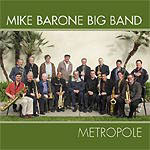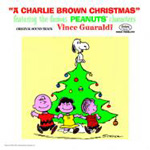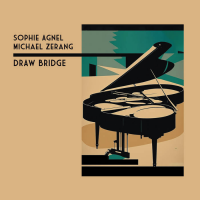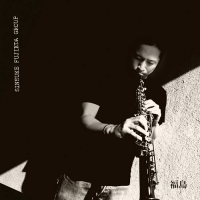Home » Jazz Articles » Multiple Reviews » Violinism: The Art of Improvisation; Soil; What Exit
Violinism: The Art of Improvisation; Soil; What Exit
 |  |  |
Leroy Jenkins The Art of Improvisation Mutable Music 2006 | Malcolm Goldstein/Masashi Harada Soil Emanem 2006 | Mark Feldman What Exit ECM 2006 |
Back in the days of jazz' infancy, the days of Stephane Grappelli and Stuff Smith, the violin was often at the forefront. While the ubiquitous saxophone slowly came to dominate, there are, fortunately, a few fiddle players who've stayed the improvised course.
Along with Billy Bang, Leroy Jenkins is one of the most notable of the last four decades. Compared to some of his contemporaries coming out of Chicago's Association for the Advancement of Creative Musicians, his recording career has been sparse. But the records he's released have, by and large, been well worth the wait. The Art of Improvisation (a title that recalls Ornette Coleman, with whom Jenkins played during the fabled Paris years in the late '60s and who Jenkins has continued to cite as an influence) is among his best releases to date. Like his 1992 release Themes & Improvisations on the Blues (CRI), The Art of Improvisation evokes no particular style except the vision of the composer and with tempo markings included in the titles, the suggestion that we are to consider Jenkins as a composer is strong. He favors delicate sounds, loosely fit but always logical progressions of small events and he couldn't have picked a more sympathetic group to realize them. Min Xiao Fen's pipa gracefully matches the strings of the violin, while Denman Maroney's prepared piano and Rich O'Donnell's melodic percussion make for a rhythm section that sings as much as do the strings. The four pieces here move gracefully between solos, duets and quartet passages, slowly but continually shifting shapes.
At 70, Malcolm Goldstein is four years Jenkins' junior and while he has followed more of a contemporary classical route, he also cites Ornette Coleman on his resume. His 1991 disc Sounding the New Violin (OO Discs) includes pieces written for him by Coleman, as well as John Cage, Pauline Oliveros and James Tenney. His duo with the younger pianist Masashi Harada is an all-improvised affair, but shows the classical training of both musicians. The 14 tracks show a shared sense of in-the-moment composing; they quickly turn to support one another and intuitively move together into different dynamics and tempi, smartly showing a shared sense of filling the space and recognizing resolutions.
Through his work in various projects with John Zorn, Mark Feldman is no doubt the best known of the players here, although his extensive discography of more than 200 releases includes work ranging from sessions with Lee Konitz, Pharoah Sanders and Bill Frisell to country singers Johnny Cash, George Jones and Willie Nelson and televangelist Jimmy Swaggart to his remarkable duo recordings with pianist Sylvie Courvoisier (see her excellent Abaton, also on ECM). What defines the sound of What Exit isn't so much his background - it's far too varied for that - as the context. There's a definite sound to ECM releases and the disc fits very much into the label's catalog. The group features two ECM vets: pianist John Taylor, who has recorded with Jan Garbarek, John Surman, Kenny Wheeler and others on the label and drummer Anders Jormin, whose ECM appearances include titles by Bobo Stenson, Tomasz Stanko and Charles Lloyd. Drummer Tom Rainey rounds out the quartet and is a perfect foil for the ECM setting - always pushing, never intruding, he keeps a strong but subtle momentum in any band he plays with.
The disc opens with the 23-minute "Arcade , moving fluidly through a number of moods almost like a medley to show the group's intentions. It's the only track that breaks ten minutes and putting it first is a bit of a surprise, but probably a smart move. It's worth the attention. In the old days it would have been a full album side, but on the little silver discs that go on forever, it could have gotten lost. It's also the strongest track on the album, the one least beholden to the shimmering ECM sound, which can be a bit misplaced, especially on a gorgeous composition like "Elegy , which leaves the listener trying to hear past the strings and into the violin's wood. Still, it's a lovely record and even with his enormous recorded output, a welcome focus on the violinist as composer.
Tracks and Personnel
The Art of Improvisation
Tracks: To Live; To Sing; To Run; To Believe.
Personnel: Min Xiao-Fen: pipa, Leroy Jenkins: violin; Denman Maroney: piano; Rich O'Donnell: percussion.
Soil
Tracks: Premonition; Soil Under Tree; Dropping out of Sky or Rock; Bitter Pride: In the Midst of Green Plain; Portentous Revelation; Come Ride and Ride to the Garden; Relentlessly Curious; Cliff, Ravine, Rock; A Garden; Romanticism in Relation to Life; Micro Lyricism; Wind and Mirror; Wind and Mirror 2; Secret Sharer.
Personnel: Malcolm Goldstein: violin; Masashi Harada: piano, vocals.
What Exit
Tracks: Arcade; Father Demo Square; Everafter (In Memory of David H. Baker); Ink Pin; Elegy; Maria Nuňes; Cadence; What Exit.
Personnel: Mark Feldman: violin; John Taylor: piano; Anders Jormin: bass; Tom Rainey: drums.
Tags
PREVIOUS / NEXT
Support All About Jazz
 All About Jazz has been a pillar of jazz since 1995, championing it as an art form and, more importantly, supporting the musicians who make it. Our enduring commitment has made "AAJ" one of the most culturally important websites of its kind, read by hundreds of thousands of fans, musicians and industry figures every month.
All About Jazz has been a pillar of jazz since 1995, championing it as an art form and, more importantly, supporting the musicians who make it. Our enduring commitment has made "AAJ" one of the most culturally important websites of its kind, read by hundreds of thousands of fans, musicians and industry figures every month.


















